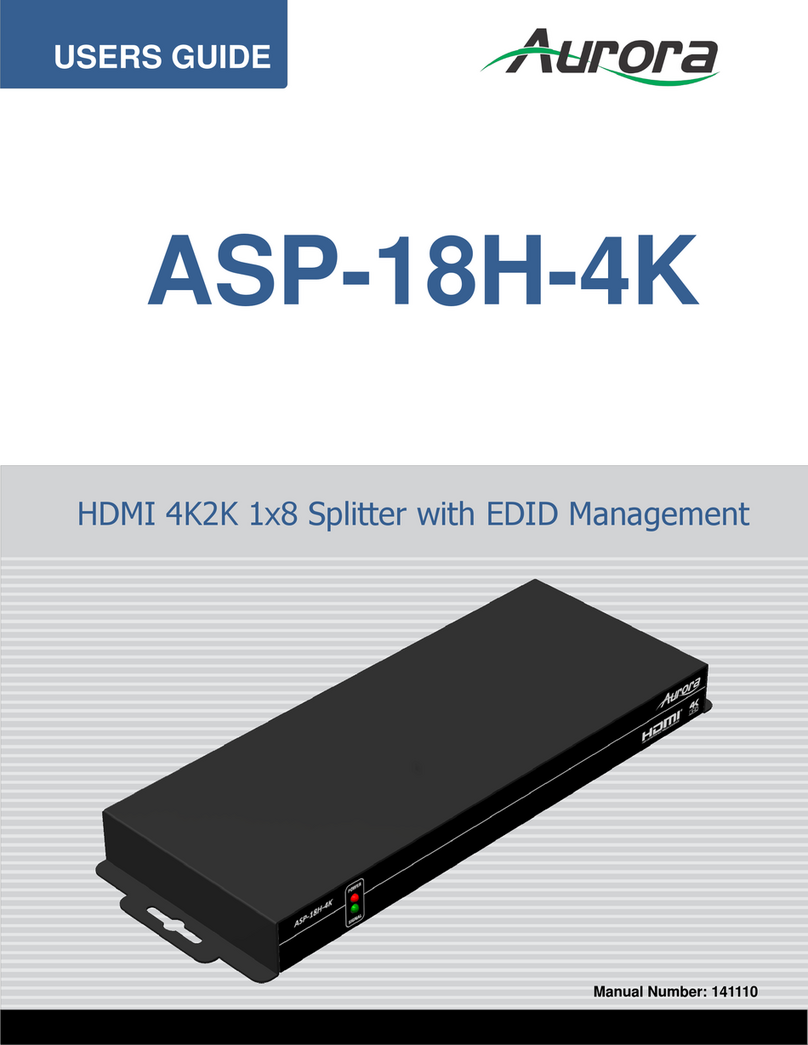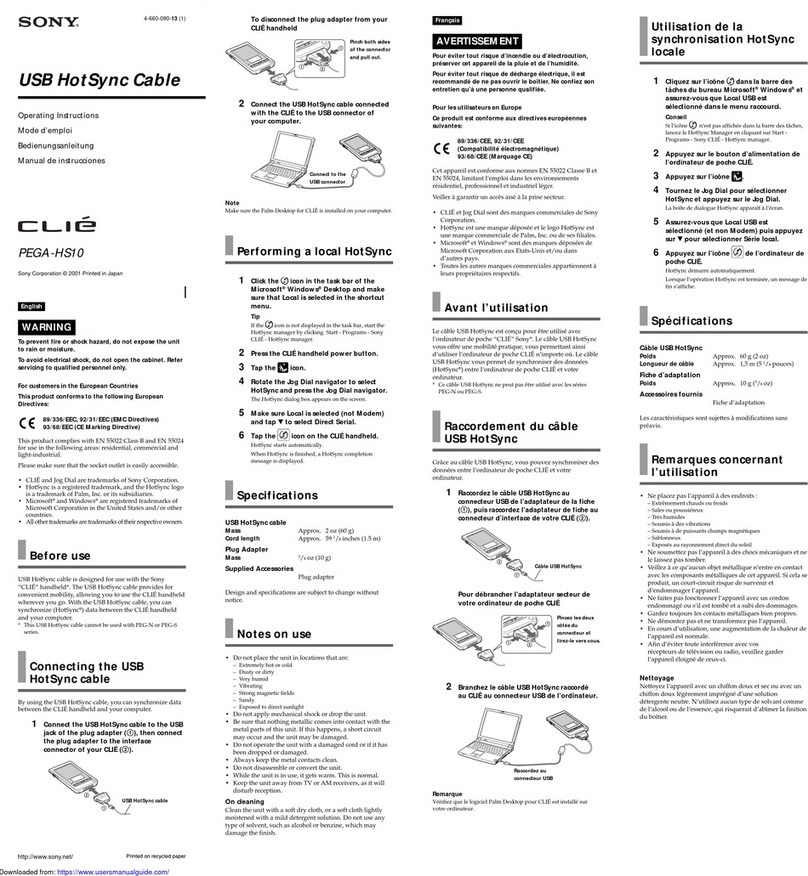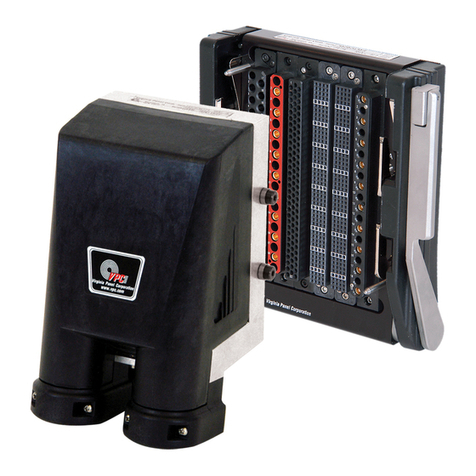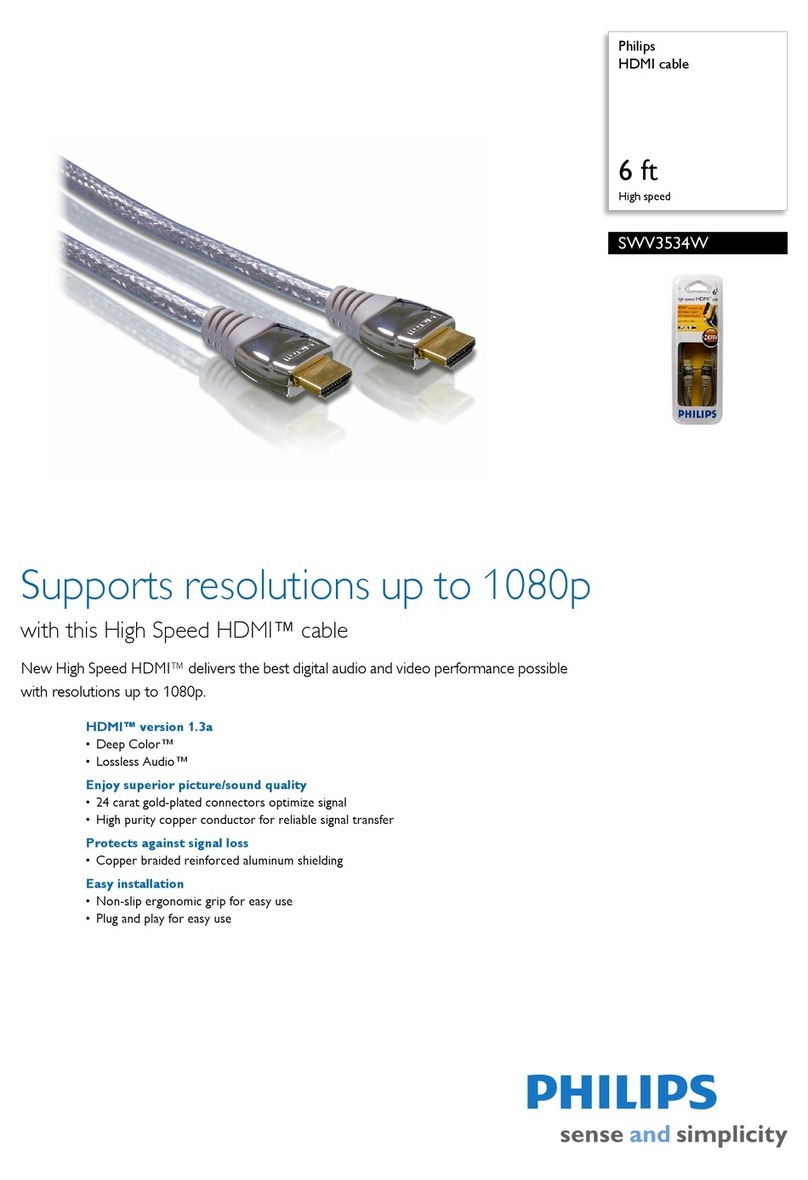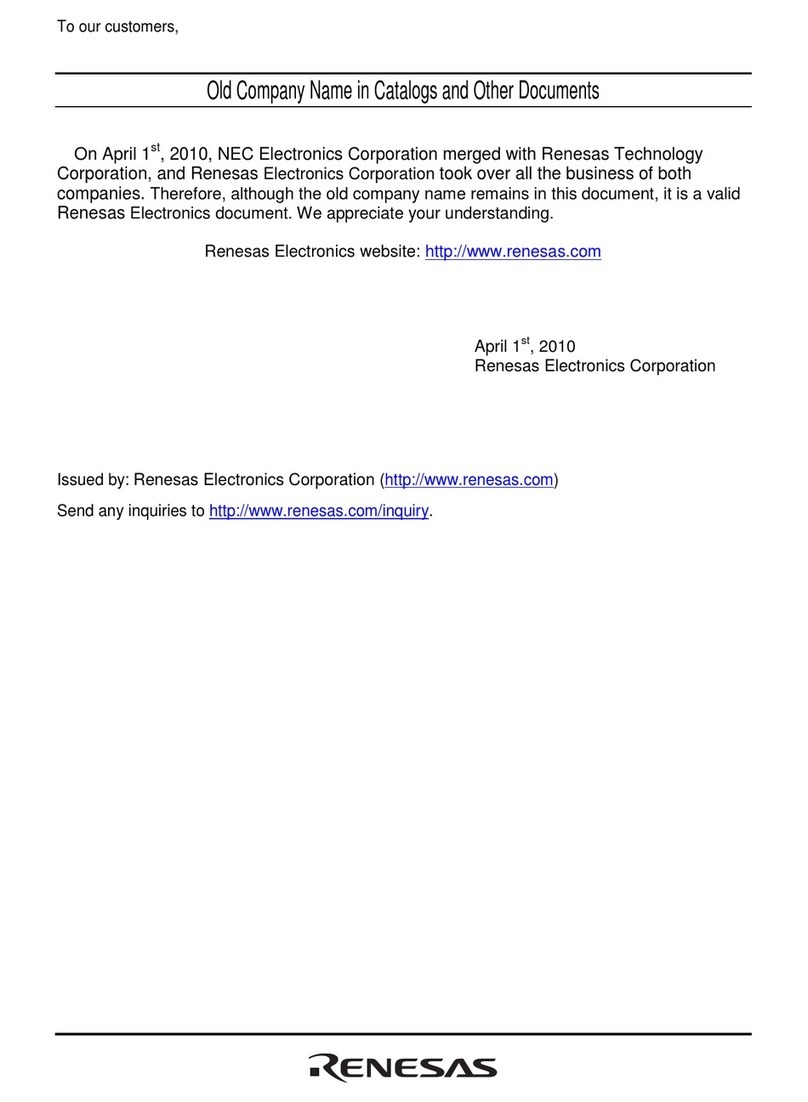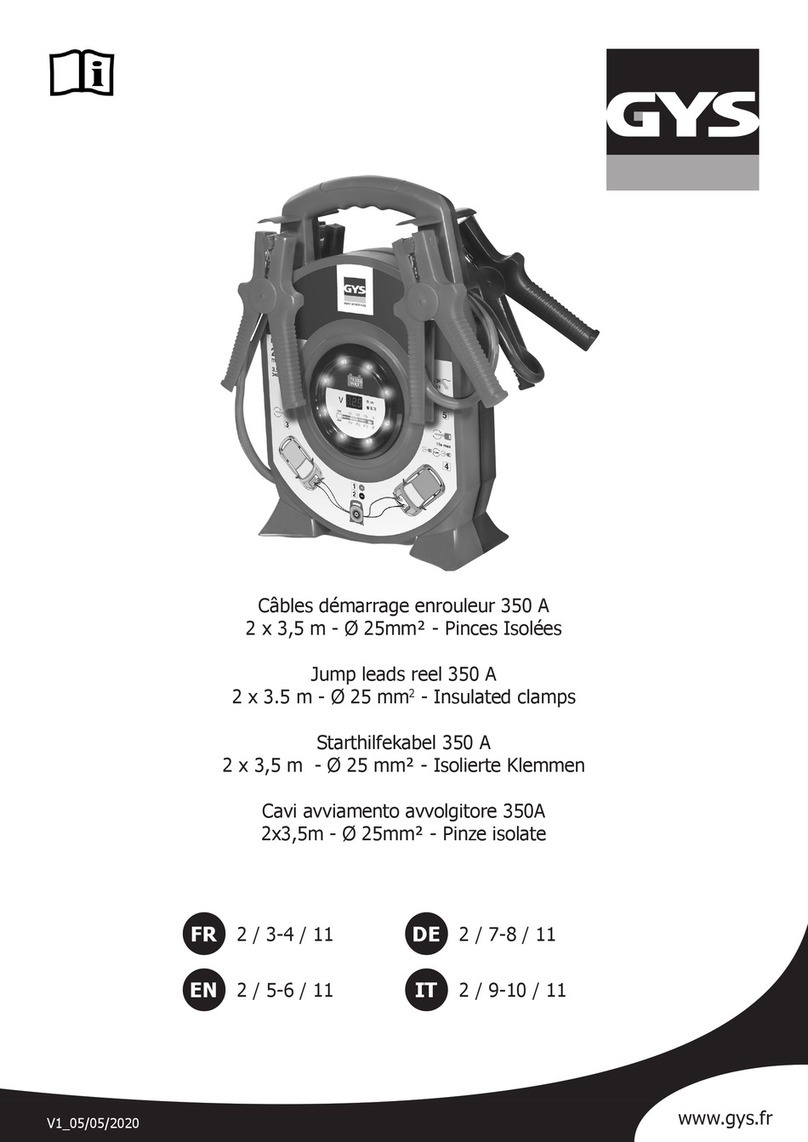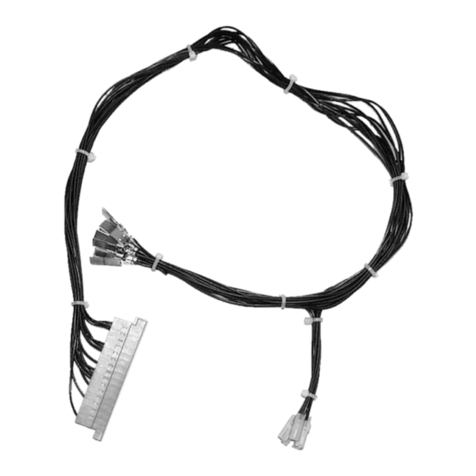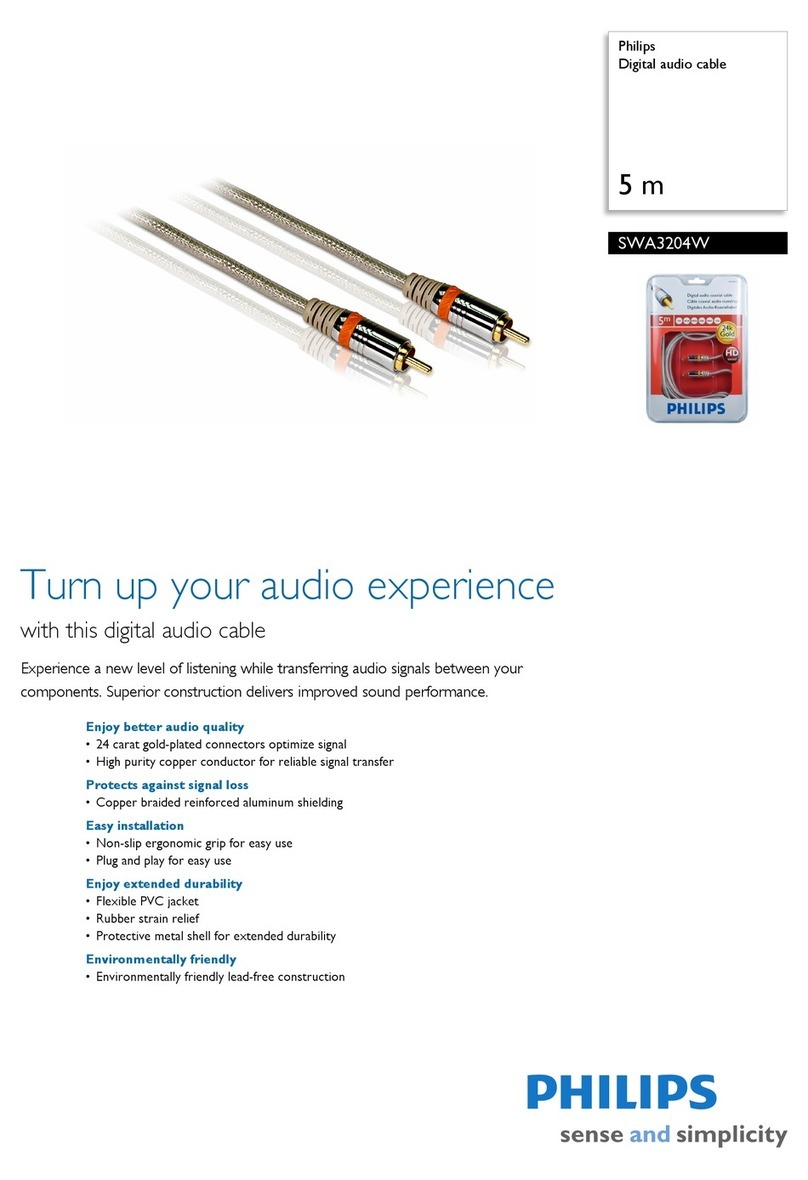Aurora DXE-218 User manual

USERS GUIDE
www.auroramm.com
Manual Number: 190524 | Firmware Rev: X.X
DXE-218
2 Input 8 Output Splitter with Downscaling
and PoE

ii
USERS GUIDE
www.auroramm.com
SAFETY INSTRUCTIONS
Please review the following safety precautions. If this is the first time using this model, then read this manual before
installing or using the product. If the product is not functioning properly, please contact your local dealer or Aurora for
further instructions.
The lightning symbol in the triangle is used to alert you to the presence of dangerous voltage inside the product
that may be sufficient to constitute a risk of electric shock to anyone opening the case. It is also used to indicate
improper installation or handling of the product that could damage the electrical system in the product or in
other equipment attached to the product
The exclamation point in the triangle is used to alert you to important operating and maintenance instructions.
Failure to follow these instructions could result in injury to you or damage to the product.
Be careful with electricity:
⚫Power outlet: To prevent electric shock, be sure the electrical plug used on the product power cord
matches the electrical outlet used to supply power to the Aurora product. Use only the power adapter and
power connection cables designed for this unit.
⚫Power cord: Be sure the power cord is routed so that it will not be stepped on or pinched by heavy items.
⚫Lightning: For protection from lightning or when the product is left unattended for a long period, disconnect
it from the power source.
Also follow these precautions:
⚫Ventilation: Do not block the ventilation slots if applicable on the product or place any heavy object on top
of it. Blocking the air flow could cause damage. Arrange components so that air can flow freely. Ensure that
there is adequate ventilation if the product is placed in a stand or cabinet. Put the product in a properly
ventilated area, away from direct sunlight or any source of heat.
⚫Overheating: Avoid stacking the Aurora product on top of a hot component such as a power amplifier.
⚫Risk of Fire: Do not place unit on top of any easily combustible material, such as carpet or fabric.
⚫Proper Connections: Be sure all cables and equipment are connected to the unit as described in this
manual.
⚫Object Entry: To avoid electric shock, never stick anything in the slots on the case or remove the cover.
⚫Water Exposure: To reduce the risk of fire or electric shock, do not expose to rain or moisture.
⚫Cleaning: Do not use liquid or aerosol cleaners to clean this unit. Always unplug the power to the device
before cleaning.
⚫ESD: Handle this unit with proper ESD care. Failure to do so can result in failure.
FCC
This device complies with Part 15 of the FCC Rules. Operation is subject to the following two conditions:
(1) This device may not cause harmful interference.
(2) This device must accept any interference received, including interference that may cause undesired operation.
Trademarks
All trademarks in this document are the properties of their respective owners.

iii
USERS GUIDE
www.auroramm.com
TABLE OF CONTENTS
DXE-218...................................................................................................................................................................... i
PACKAGE CONTENTS............................................................................................................................................. 5
OPTIONAL ACCESSORIES ..................................................................................................................................... 5
INTRODUCTION........................................................................................................................................................ 6
About ...................................................................................................................................................................6
Features...............................................................................................................................................................6
SKU Front ............................................................................................................................................................7
SKU Rear.............................................................................................................................................................9
UNDERSTANDING THE BASICS........................................................................................................................... 10
Direct Connection with No Ethernet Switch.......................................................................................................10
1GbE Ethernet Switch .......................................................................................................................................10
Network Infrastructure .......................................................................................................................................10
Isolated Network or Users Network ...................................................................................................................11
Controlling the VLX............................................................................................................................................11
Controlling the VLX for Redundancy .................................................................................................................11
EDID and its Importance ...................................................................................................................................11
Videowall Capabilities........................................................................................................................................13
Ethernet Bandwidth Usage................................................................................................................................13
USB Network Bandwidth Requirement: ......................................................................................................... 13
Typical Video Network Bandwidth: ................................................................................................................. 13
HARDWARE INSTALLATION ................................................................................................................................. 14
Network Setup ...................................................................................................................................................14
Encoder Setup...................................................................................................................................................14
Decoder Setup...................................................................................................................................................14
Control Setup.....................................................................................................................................................15
APPLICATIONS....................................................................................................................................................... 16
Example 1: Retail Store Display Distribution.....................................................................................................16
CONNECTOR PIN DEFINITION ............................................................................................................................. 17
HDMI..................................................................................................................................................................17
CAT5e/6/6A .......................................................................................................................................................17
RS-232...............................................................................................................................................................18

iv
USERS GUIDE
www.auroramm.com
APPENDIX 1............................................................................................................................................................ 19
Troubleshooting .................................................................................................................................................19
APPENDIX 2............................................................................................................................................................ 21
Firmware Update ...............................................................................................................................................21
APPENDIX 3............................................................................................................................................................ 21
UART Protocol...................................................................................................................................................21
Telnet Protocol...................................................................................................................................................22
APPENDIX 4............................................................................................................................................................ 23
Recommended Cabling .....................................................................................................................................23
APPENDIX 5............................................................................................................................................................ 23
Recommended Network Switches ....................................................................................................................23
APPENDIX 6............................................................................................................................................................ 25
Technical Specifications ....................................................................................................................................25
APPENDIX 7............................................................................................................................................................ 26
Warranty ............................................................................................................................................................26

5
USERS GUIDE
www.auroramm.com
PACKAGE CONTENTS
Please make sure the following items are included within your package. Contact your dealer if any
items are missing or damaged.
SKU
⚫DXE-218
Power supply is sold separately as unit is PoE.
Note: Go to www.auroramm.com for latest manual and firmware.
OPTIONAL ACCESSORIES
⚫PoE Power Supply
PS0081-1
⚫HDMI Cables
CA-HDMI 18 Gbps HDMI Colored Cable Series

6
USERS GUIDE
www.auroramm.com
INTRODUCTION
About
The DXE-218 is the first ever 8 port 4K60 4:4:4 HDMI® PoE Splitter with downscaling per individual
output. The unit delivers enhanced capabilities such as individual CEC control, EDID management,
Hot Plug Detection, and EDID reporting per output. This is all done through the LAN port for full
control and statistics of all ports.
In addition, the downscaling per port allows 1080p screens to be utilized on the same splitter with a
4K60 source. To round out the solution, the DXE-218 has 2 input ports to select from to change
content remotely.
Features
•2 HDMI® inputs
•8 HDMI® outputs
•4K2K @ 60Hz 4:4:4
•Per port downscaling to 1080p
•10/100 PoE (Power over Ethernet)
•CEC control per port
•EDID management
•Hot plug detection
•EDID reporting
•Front LED status display
•Remote IP Firmware Update
•Custom EDID Management

7
USERS GUIDE
www.auroramm.com
SKU Front
LEDs
⚫Power/Status –Power will light green when unit is on or in standby. Status will blink at a normal pace during
regular operation and slower pace when in standby.
⚫Encoder/Decoder –Encoder (transmit) or Decoder (receiver) will be lit when set accordingly.
⚫HDMI 1/HDMI 2 –Will light accordingly based on input selection. If both are lit, then it is the remote stream
when set as a decoder. If neither is lit, then no source is routed.
⚫232 TX/RX –Will blink when RS-232 data is being sent or received.
⚫IR TX/RX –Will blink when IR signal is being sent or received.
⚫Host/Device –For USB option. Host will be lit if set for PC to be connected to the USB. Device will be lit if
set for peripherals like keyboard or mouse is to be connected.
⚫LAN connector LED’s (Rear):
oLeft LED Green = 1G/Good.
oLeft LED Orange = 10/100 or Bad Connection.
oRight LED is Orange, for general LAN activity.

8
USERS GUIDE
www.auroramm.com
Buttons
⚫Power Button –Press and hold for 5 seconds for power standby.
⚫Menu Button –Press and hold for 5 seconds to switch between encode/decode mode.
⚫Up Button - Select next input source.
⚫Down Button - Select previous input source.
⚫Enter Button –Pressing will toggle Link On/Off. This stops streamed Video, IRoIP, SoIP and USBoIP. If the
VLX device is connected in the network the status led will go on/off to indicate that link has gone on/off.
Miscellaneous
⚫IR Window –IR remote and IR Pass through.
⚫IR Input –For use with external IR Receiver. If utilized, front IR window will become disabled. Note: It is
important to use 5V only IR photo receiver which is with carrier and inverted. Use a stereo 3.5mm TRS
connector.
⚫USB HID –Dual Type A USB 1.1 Connectors for keyboard/mouse
Special Functions
⚫Factory Default - Press Power and Menu for 5 seconds. The USB Host LED will blink to indicate factory
default and the unit will reboot.
⚫Reboot - Press Power button for 5 seconds. Power LED go off and the board reboots.
⚫Secondary Firmware Image Mode - Press Power and Down button while powering up for 5 seconds. The
Host and Device LEDs will keep blinking and both Encoder and Decoder LEDs will be on.
⚫IP Information on RS-232 –Press and hold Up and Down for 5 seconds and the units IP information will
reveal on RS-232 port at 9600 baud 8N1.
Default Settings
⚫Baud Rate: 9600
⚫IP Mode: DHCP
⚫Fallback IP Mode (no DHCP present): Auto-IP 169.254.xxx.xxx range
⚫Autosense: Off

9
USERS GUIDE
www.auroramm.com
SKU Rear
Rear
⚫48VDC 48 Volt DC isolated power input.
⚫LAN 10/100/1000Mbps LAN. Can power the unit with PoE from injector or switch.
LAN connector LED’s (Rear):
oLeft LED Green = 1G/Good. (1G Required for proper operation)
oLeft LED Orange = 10/100 or Bad Connection.
oLeft LED Orange = 10/100 or Bad Connection.
⚫USB 2.0 50Mbps USB 2.0 Micro to be connected to a host (PC) or device
(ex. Mouse, keyboard, etc.).
⚫Control IR Out Infrared control output 30kHz-60kHz. IR emitter must be mono 3.5mm TS.
⚫HDMI In 1/ In 2 HDMI inputs up to 4K30p/4:4:4 or 4K60p/4:2:0.
⚫HDMI Out HDMI output to Display up to 4K30p/4:4:4 or 4K60p/4:2:0.Output
can be native or scaled (e.g. from 1080p to 4K30p/4:4:4)[1]
⚫Audio In Analog stereo audio input.
⚫Audio Out Analog stereo audio output. De-embedded audio output from HDMI stream.[2]
HDMI multichannel audio (up to 7.1) is down-mixed to stereo (2 channel).
⚫Control RS-232 Serial port pass-through and control up to 115Kbps.
⚫SFP SFP Cage for Multi-mode or Single Mode Fiber & RJ-45 LAN with optional
modules available from Aurora.

10
USERS GUIDE
www.auroramm.com
UNDERSTANDING THE BASICS
Direct Connection with No Ethernet Switch
The VLX Series is designed to automatically tunnel the video, audio, USB, RS-232, and IR if they are connected without
an Ethernet switch once they have been connected for the first time with an Ethernet switch.
1GbE Ethernet Switch
It is important to use a non-blocking IGMP 1GbE switch with IGMP snooping and Jumbo packets. The size of the switch
is based on the requirements of the project. With this in mind, consider if extra port capacity is required for future
expansion. If you run out of port capacity, you can always add another 1GbE switch in the future. The VLX, when set to
encoder (TX), determines the bandwidth that will be multicast across the network. 24bit 4k@30Hz can peak at about
850Mbps and 425Mbps for 24bit 1080p@60Hz (Data Rate in bits per second = Color Depth x Horizontal Resolution x
Vertical Resolution x Frame Rate) but typically averages 218Mbps for full motion 4K video. This does not include the
10/100 LAN, 50Mbps USB, RS-232, IR over the same transmission if required. If 10 units are set as encoders, and
4K@30Hz is the desired video resolution, then 8.5Gbps of bandwidth will be required if uplinked to another switch. If the
available bandwidth between the two 1GbE switches is less than 8.5Gbps, then packets will drop and information will be
lost. It is also a good idea to take into account overhead and assume 15% bandwidth loss to play it safe. Since each port
is bi-directional 1Gbps, it enables any port to be used as an encoder or decoder. The AV industry is used to standard
distribution topology limitations of 4x4, 8x8, 16x16, etc. With networked based video distribution, a 48 port 1GbE switch
as an example can be 24x24, 1x47, 47x1, 12x36, etc. If bandwidth is tight the VLX has the ability to cap the bandwidth at
200Mbps which will work well for most applications. (see Ethernet Bandwidth Usage section for more detailed
information)
Network Infrastructure
The raw network cabling as well as the patch cables are as important as the switch. When using copper, CAT5e, 6, or 6a
cable is preferred for optimal performance and is important to follow the standard rules for running Ethernet cables. No
sharp bends, coiling, putting near power lines, grouping unshielded cables tightly together with other LAN cables, etc.
Shielding is not necessary but can be used for noisy environments.

11
USERS GUIDE
www.auroramm.com
Isolated Network or Users Network
When discussing a networked based video solution, many times it is assumed it has to be on the client’s network. This is
not true. The application determines the type of network to be used. For example, if it is simply being used as a typical AV
matrix switch with no distribution throughout the facility, then a 1GbE switch can be used just for that room. Just because
it is Ethernet based does not mean it has to be used on the main network. The Ethernet switch is simply used as the end
point for all the cables and the glue that holds everything together. In other words, it takes the place of the standard AV
matrix switch topology. If only remote control is required from the main network, then connect the 1GbE switch to the
main network and allow the control data between the 1GbE switch VLAN and the main network. Even if the VLAN is part
of the main network it does not mean you will use all the bandwidth. The purpose of IGMP, is to only send the multicast
data to the ports specified, which would be where the VLX units are connected to. Non-blocking switch assures full
bandwidth is available for all ports as required.
Controlling the VLX
To simplify control of the VLX, each unit can be controlled via the Aurora IPBaseT Manager server, either running on a
PC or on a dedicated control appliance (RXS-1). It can also be controlled from other Aurora control products or 3rd party
control systems with the available VLX API. In order to obtain the VLX Server API commands you must be dealer status
otherwise an NDA is required and is at the discretion of Aurora. The VLX can also work without the server as a 3rd party
control can communicate directly to each unit to change settings or make routes. This makes the VLX extremely flexible
and for low cost smaller systems very cost effective.
Controlling the VLX for Redundancy
Multiple control systems can run on the same network for redundancy. It is important only one communicates at any
given time or incomplete commands may occur between units communicating simultaneously.
EDID and its Importance
One of the most forgotten setup procedures in AV systems is the EDID. The EDID comes from the destination (display,
VTC, recorder, etc.) and must be saved into the encoder and decoder HDMI input ports. This allows the source (Blu-ray,
computers, etc.) to know the capabilities of the destination.

12
USERS GUIDE
www.auroramm.com
This includes the audio type if any, video resolution and timing, color space, color depth, and more. If no EDID is present
an HDMI device will revert to lowest resolution in DVI mode which also means no audio. If the wrong EDID is used, the
image may look pink, green, or have no image at all.
To make matters more complex, if different destinations/displays are in use in a matrix configuration, then it is important
to use an EDID with a common denominator or only one or the other destination may work. In an ideal installation, all the
destinations should have the same capabilities for optimal performance. I this is not possible a scaler may have to be
implemented to assist in the compatibility. For example, there are 2 displays one 1080p the other 4k UHD. If the EDID of
the 4K display is used, the 1080p will not see an image if the source is capable of 4K. If the 1080p EDID is used, then
both will see the image but the 4K will never benefit from 4K content. In a situation where this is unacceptable, a 4K scaler
can be used on the 1080p screen to down scale the 4K content so the 4K EDID can be used and the better screen can
have a benefit. Note scalers do add frame latency and can affect image quality based on the quality of the scaler. This is
why it is always ideal to use destinations with similar capabilities for optimal performance.
Audio can be impacted just as easily. If a destination is 6-channel surround sound capable and the other destination is
not, then the EDID from the 5.1 destination cannot be used, or there will be no audio on the other destination. In most
commercial installations, it should not be an issue to choose the lowest common denominator, which is 2-channel audio,
but in cases where you must have surround sound then a down-mixer for the 2-channel destination must be used.
In some cases, a custom EDID could be created, as the audio and video are mismatched between the destinations. This
can occur for example, when one destination has 4K 2-channel audio and the other 1080p with multichannel surround
sound. If the EDID of the 1080p destination is used, audio will not be present on the 4K destination. If the 4K EDID is
used, there will be no video present on the 1080p destination. The only way to solve this issue, is a new EDID combining
the common features. In this case an EDID which is set at 1080p with 2-channel audio is the solution.

13
USERS GUIDE
www.auroramm.com
Videowall Capabilities
The VLX videowall mode has the ability to take in up to a 4K UHD signal and create a low latency high quality videowall
up to 8x8 in size. The way the mode works is by dividing the input resolution by the amount of displays. For example, a
2x2 videowall will become four 1080p signals from a 4K UHD signal. The VLX also has bezel compensation to create a
seamless window pane effect.
Ethernet Bandwidth Usage
The VLX streaming bandwidth is dynamic with the compression a low fixed 8:1 compression. With no USB activity and a
still image fed into a decoder the VLX will use as little as 216Kbps of network bandwidth. Maximum throughput is
820Mbps.
USB Network Bandwidth Requirement:
⚫When USB devices are attached but there is no activity, the network bandwidth requirement is almost 0.
⚫For non-isochronous USB devices, network performance only impacts the performance of the USB device. It
won't impact USB devices' functionality.
⚫For isochronous USB devices (for example, USB audio), the network latency may impact the functionality of this
kind of device. If the network latency is too long, iso packets may be discarded and causes audio glitch. It is
important to use fast-leave high quality switches for this application.
⚫For most of USB devices, the network bandwidth requirement will be almost the same as what it takes on USB
bus.
Typical Video Network Bandwidth:
⚫Still frame < 216Kbps
⚫Web browsing 70~100Mbps (1920x1080) 60fps
⚫YouTube full screen 21~132Mbps (1920x1080) 60fps
⚫Movie average 165~315Mbps (1920x1080) 60fps

14
USERS GUIDE
www.auroramm.com
HARDWARE INSTALLATION
Network Setup
1. Connect a 1GbE network switch and make certain IGMP Snooping and Jumbo/MTU Packet features are
enabled as per the VLX Series Network Switch Recommendations and Configuration document which can be
found on the Aurora website. VLX requires Jumbo/MTU Packet of 8192 or better for full 4K video streaming.
2. Connect CAT cable RJ-45 accordingly to the network switch and to the VLX units.
Encoder Setup
1. Plug HDMI source(s) into the inputs. Local display should be connected to the HDMI output. Connect any other
RS-232, IR, USB, or audio accordingly.
2. Connect power via 48v red terminal connector or PoE via LAN connection. Unit will take about 30 seconds to
initialize.
3. Make certain the unit’s LED is set to Encode. If not, for box version use the front menu button by holding for 5
seconds or the stream button on the wall plate version.
4. For the box version select the input to be streamed using the front up or down buttons to choose HDMI 1 or 2.
The HDMI 1/2 LED will light accordingly.
5. Every VLX unit has a unique MAC and IP addresses. It can be changed using through the built-in setup web
pages. It is important to make certain each unit has its own unique IP and Host Name.
6.
Decoder Setup
1. Plug the display into the HDMI output. If local sources will also be connected to the decoder, use the HDMI
inputs 1 and/or 2. Connect any RS-232, IR, USB, or audio accordingly.
2. Connect power via 48v red terminal connector or PoE via LAN connection. Unit will take about 30 seconds to
initialize.
3. Make certain the unit’s LED is set to Decode. If not, for box version, use the front menu button by holding for 5
seconds or the stream button on the wall plate version.

15
USERS GUIDE
www.auroramm.com
4. For the box version select the input to be streamed using the front up or down buttons to choose HDMI 1, 2, or
stream. The HDMI 1/2 LED will light accordingly. If both are lit, then stream is selected. For the wall plate use
the labeled buttons accordingly.
5. Every VLX unit has a unique MAC and IP addresses. It can be changed using through the built-in web setup
pages. It is important to make certain each unit has its own unique IP and Host Name.
Control Setup
1. If the network has a DHCP server, make sure the PC is set to DHCP. If not, make sure the PC is set to a
169.254.xxx.xxx IP address. If the VLX units have previously been set to a static IP address, make sure the
PC is set to an IP address in the same subnet.
2. Launch the windows application IPBaseT Manager available on the Aurora customer portal.
3. The units on the network will populate into the encoder and decoder fields accordingly.
4. This will allow you to initially identify and communicate with the built-in web pages to set up each unit or to
communicate directly with the VLX protocol.
Important
⚫Take note of the MAC Address of every unit. It can be found on the underside or rear of the unit. The
MAC Address is how you will identify the unit relative to its location.
⚫Make certain all units are using the latest firmware.
⚫Remember to setup EDID for proper operation.

16
USERS GUIDE
www.auroramm.com
APPLICATIONS
Example 1: Retail Store Display Distribution
Retail Store Display Distribution
The DXE-218 is the perfect fit for HDMI distribution of the same signal up to 8 displays or more if
daisy chained together. The integrated per port downscaling allows for compatibility with lower cost
1080p displays that normally cannot handle a 4K signal. This saves money by eliminating the need
for external scalers.
Retail stores typically display the same content on several screens for consumers to compare the
difference between the brands and models. These screens do not always have the same resolution
capabilities. The DXE-218 creates the compatibility with one 4K source.
The ability to do CEC control per port allows the DXE-218 to control the on/off and source inputs
independently on each screen. This can all be done remotely. This feature assures all the screens are
on when they should be and off when the store is closed as saving power and screen life is important.
Remote diagnostics is important too. The DXE-218 through the LAN can report what ports are
connected and read back the EDID of each screen to know what display is connected.
A clean install for serviceability is a must. PoE eliminates all external power supplies and even allows
for remote power cycling of the DXE-218. The DXE-218 is firmware upgradeable through the LAN
and it has a simple method for changing the IP address when units are swapped, especially when
more than one is connected.
The DXE-218 is the ultimate 8 port splitter advancing the technology to the next level.

17
USERS GUIDE
www.auroramm.com
CONNECTOR PIN DEFINITION
HDMI
Pin 1
TMDS Data2+
Pin 8
TMDS Data0 Shield
Pin 15
SCL
Pin 2
TMDS Data2 Shield
Pin 9
TMDS Data0–
Pin 16
SDA
Pin 3
TMDS Data2–
Pin 10
TMDS Clock+
Pin 17
DDC/CEC Ground
Pin 4
TMDS Data1+
Pin 11
TMDS Clock Shield
Pin 18
+5 V Power
Pin 5
TMDS Data1 Shield
Pin 12
TMDS Clock–
Pin 19
Hot Plug Detect
Pin 6
TMDS Data1–
Pin 13
CEC
Pin 7
TMDS Data0+
Pin 14
Reserved (N.C. on device)
CAT5e/6/6A

18
USERS GUIDE
www.auroramm.com
RS-232
The RS-232 is a 3.5mm TRS connector. Tip is TX (output), ring is RX (input), and Sleeve is ground. To simplify
connections Aurora offers pre-molded RS-232 cables in null and none nulled in male and female DB9.

19
USERS GUIDE
www.auroramm.com
APPENDIX 1
Troubleshooting
It is advisable to make certain all units are using the latest firmware before troubleshooting. Also make sure all network
connections are operating are 1G.
VLX Web Server is not responding
⚫Make certain every VLX unit has a unique IP Address set for the webserver. Disconnect unit from 1G network
and connect PC directly to 1G LAN and check to see if web server appears in browser. If not trying restoring
defaults and try again. Repeat this for every unit. Another method is using the server to issue commands to
change the webserver IP settings over the 1G.
Display will not show a picture
⚫All devices are powered on.
⚫Unit is set properly for Decoder. LED status will show this.
⚫Check routing with built in web page of decoder.
⚫A picture is achieved when connecting the source directly to the display.
⚫Display is set to the correct signal source input mode using display’s remote. Example, switching to HDMI 1 if
HDMI 1 interface is connected to the RX via a HDMI cable.
⚫All the cables are qualified.
⚫The Switch supports IGMP snooping and this function is enabled.
⚫Look at status LED and make certain unit is linked. The enter button on the front changes the link status.
Display has image with wrong color
⚫Make certain to learn the EDID from the display and save into each unit HDMI input ports.
⚫If different displays are used with the same source an EDID with a common denominator must be used. For
example, if on destination is 4K UHD and the other is 1080p and the 4K EDID is utilized, the 1080p screen will
not get an image if the source is 4K capable. In this case, it would be better to use a 1080p EDID.

20
USERS GUIDE
www.auroramm.com
Audio not working
⚫Make certain correct audio path is selected. The VLX can choose between analog input and HDMI.
⚫Verify correct EDID usage. If EDID has 5.1 surround sound listed and display cannot do 5.1 there will be no
audio. Lack of EDID will also cause a source to output DVI which lacks audio.
⚫Check volume on display or amplifier
VLX RS-232 control is not working
⚫Check wiring for RX, TX, and Ground. (VLX 3.5mm Tip is TX, Ring is RX, Sleeve is GND)
⚫Check the baud rate of the unit.
⚫Confirm the protocol being utilized with a terminal program.
⚫Ensure the proper serial control mode is selected (SoIP)
Routing a source to multiple displays is tearing
⚫Check network switch is properly configured for IGMP and supports Jumbo packets. VLX requires
Jumbo/MTU Packet of 8192 or better for full 4K video streaming.
VLX Server is responding poorly
⚫Check network switch is properly configured for IGMP with snooping
Displays not showing same video frame as others
⚫If displays are different brands this can happen as depending on the scaler circuitry utilized inside the
display and the amount of buffering used.
⚫If displays are different brands trying using same native resolution of the displays. Some displays will not
scale or use memory and just sync to the native signal.
Displays not showing same video frame as others
⚫If displays are different brands this can happen based on the design. It is always ideal to use same models
for consistency or a central source for audio to keep in sync.
Other manuals for DXE-218
1
Table of contents
Other Aurora Cables And Connectors manuals
Popular Cables And Connectors manuals by other brands
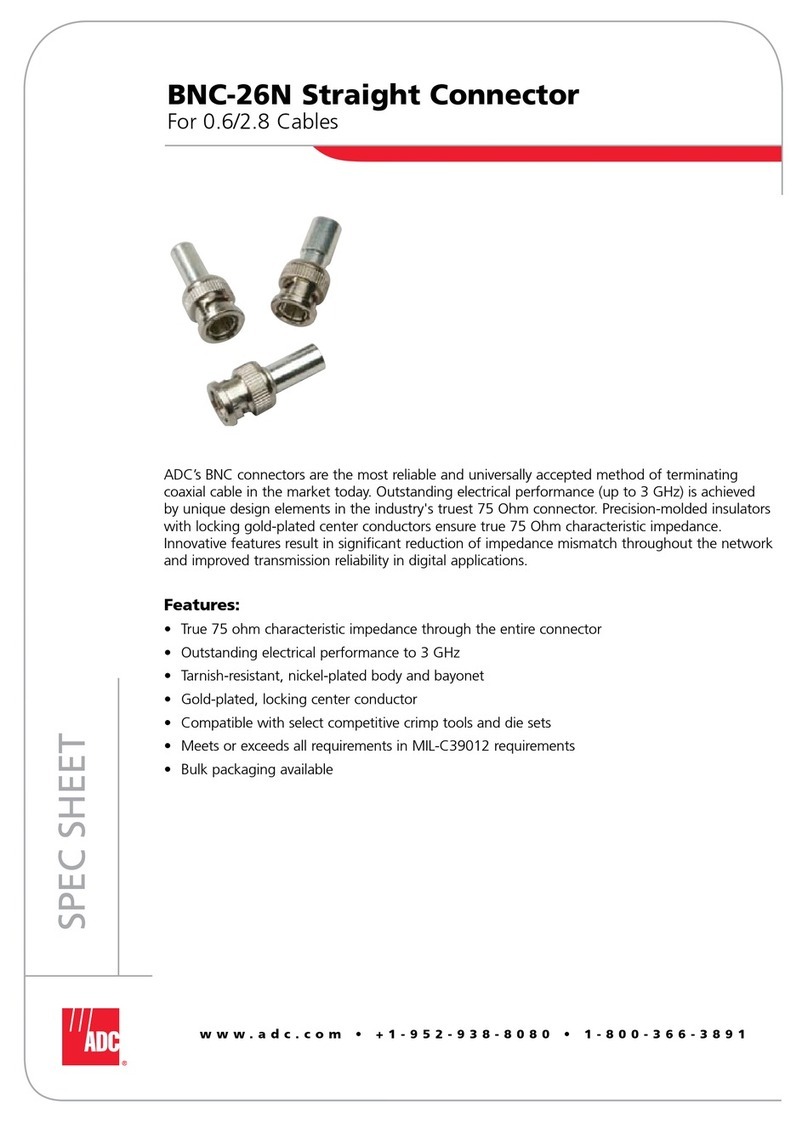
ADC
ADC Straight Connector BNC-26N Specification sheet
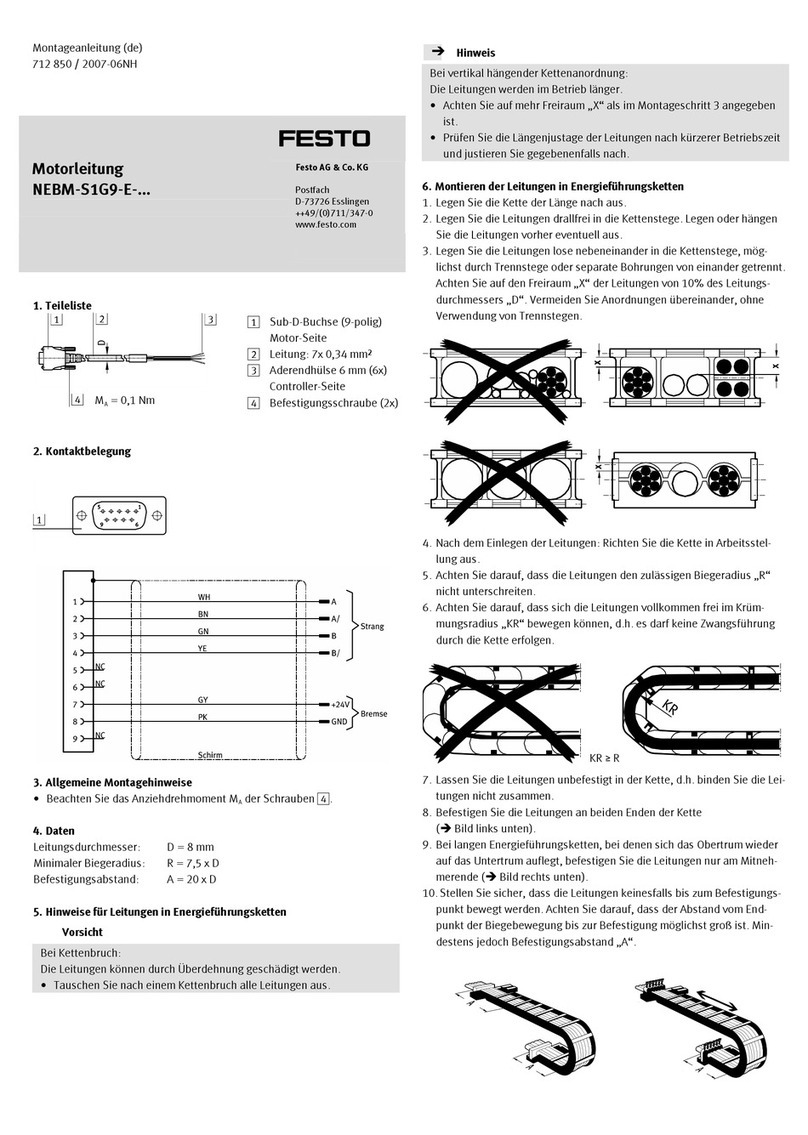
Festo
Festo NEBM-S1G9-E Series Assembly instructions
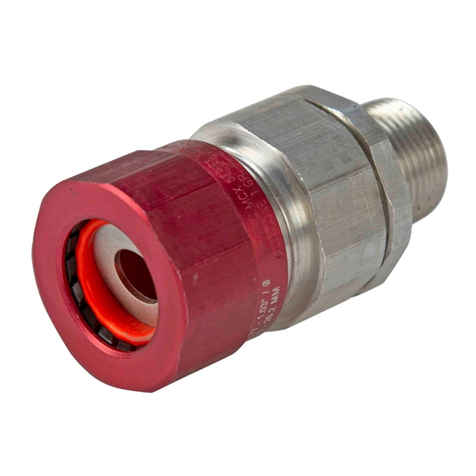
Larson Electronics
Larson Electronics CGB-C1D1-MCHL Series instruction manual
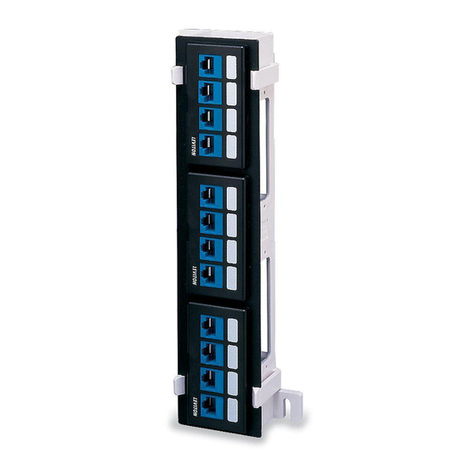
Leviton
Leviton QuickPort 47689-0QP Instructions for use
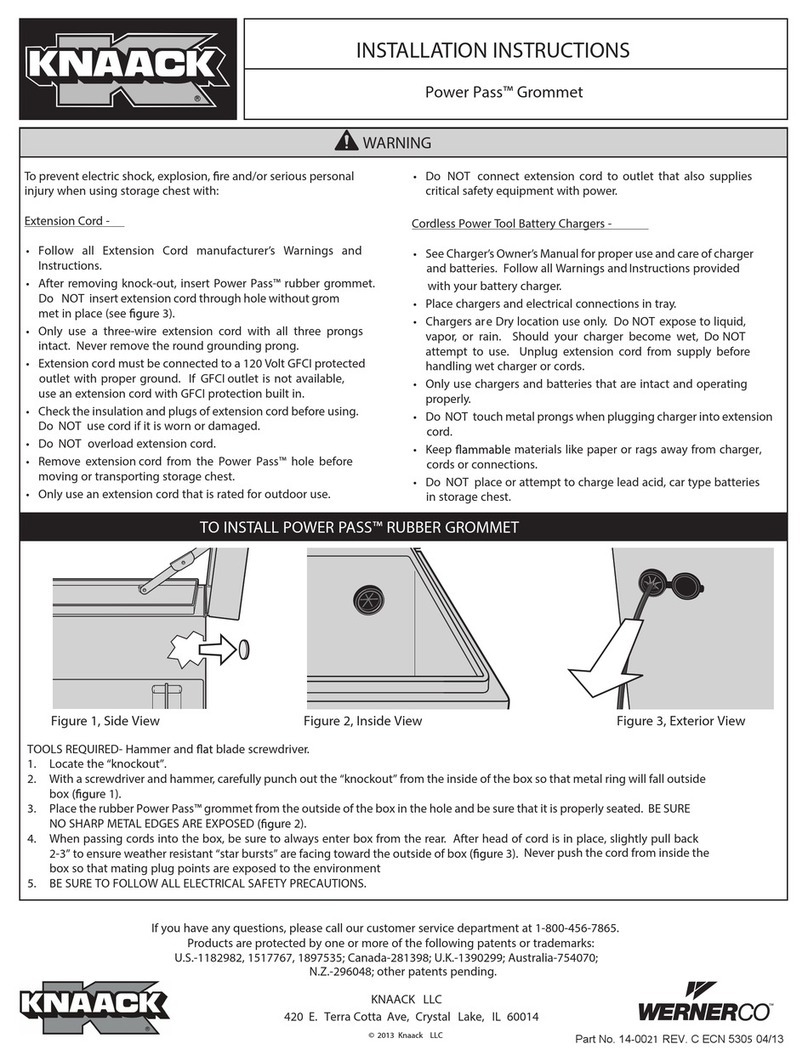
Knaack
Knaack Power Pass installation instructions
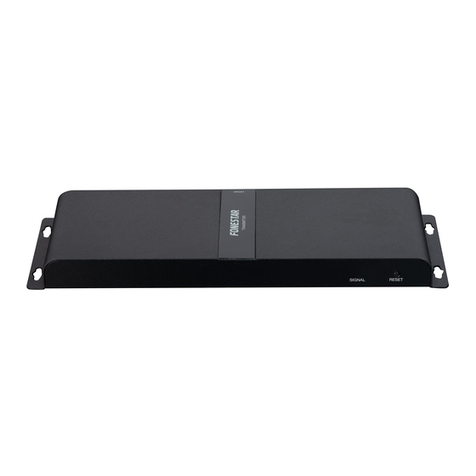
FONESTAR
FONESTAR FO-15CAT8E instruction manual
